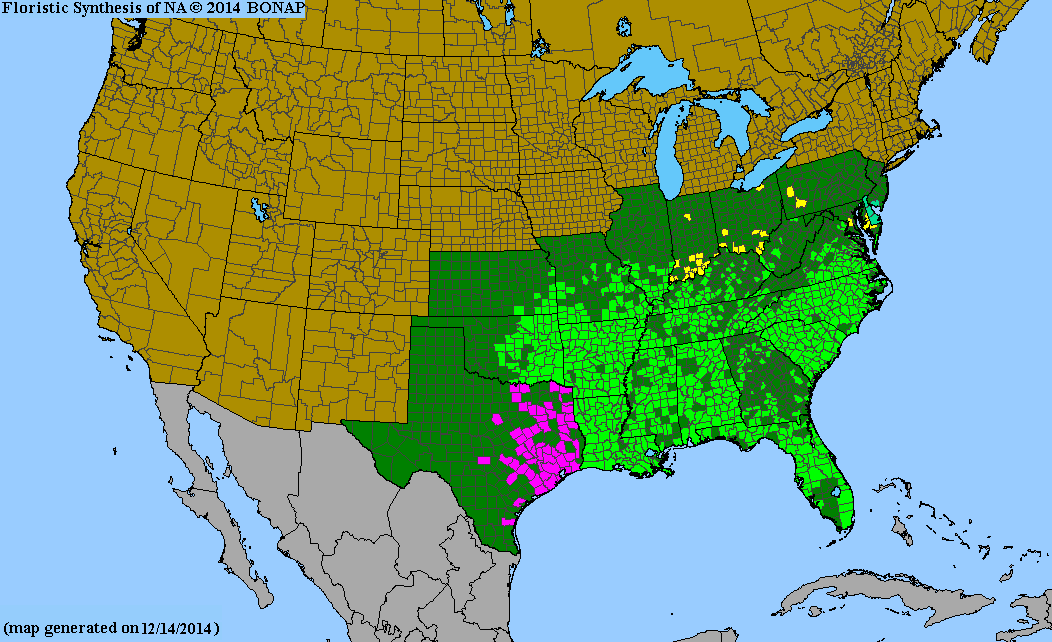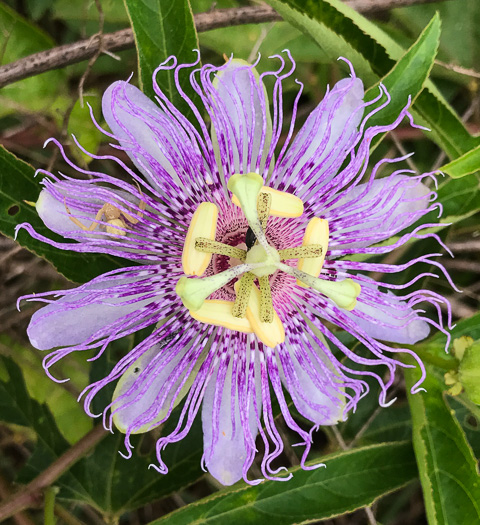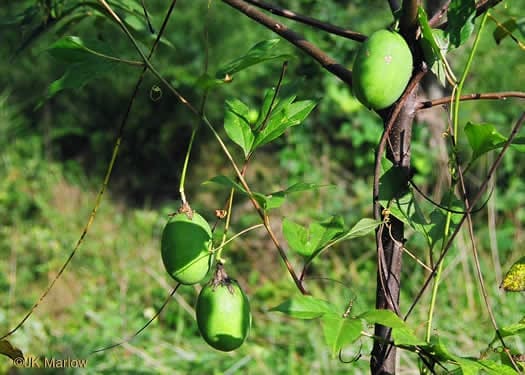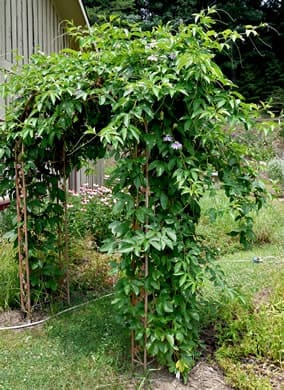Passifloraceae
purple passion flower
Passiflora incarnata
Synonyms
Granadilla incarnata
Other Common Names
may apple
Plant Type
Vine
Life Cycle
Perennial
Typical Size
25 ft. wide
Tolerant of
Drought
Inolerant of
Poorly Drained Soil
Propagation
By seed, By cutting, By division
Plant Propagation Notes
Suckers can be dug up and moved.
Plant Planting Notes
May spread aggressively by suckers to cover large areas.
Plants/Diseases
No significant disease or pest issues. May experience root rot in poorly drained soils.
Wildlife Benefits
Nectar/pollen source for pollinating insects, Host plant for butterfly larvae, Nectar source for hummingbirds, Supports numerous caterpillars (bird food)
Leaves
Leaves alternate, deeply lobed with serrate margins.
Flowers
Showy purple, pink and white flowers with frilly linear petals and large, prominent anthers and stamens.
Fruit
Large, leathery egg-shaped berry.
Bark
Green and smooth.
Toxicity
No known toxicity.
Edibility
Fruit is edible.

USDA Hardiness Zones
5, 6, 7, 8, 9
Light Exposure
Full Sun, Part Sun/Shade
Soil Moisture
Medium, Moist
Soil Drainage
Well-drained
Native in South Carolina?
Yes
Plant Native Habitat
Thickets, roadsides, fields, and fences.
Global Conservation Status (NatureServe)
Secure (G5)
Federal Conservation Status (USFWS)
Not Listed
Distribution Notes
Common throughout South Carolina.




